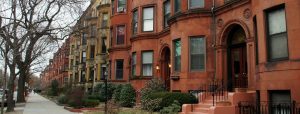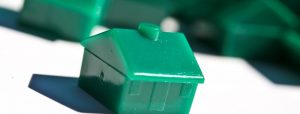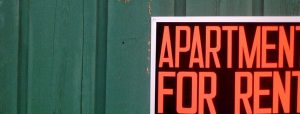Sen. Marco Rubio bought a house. Then he bought another house. And another.
Then it all went bad!
Oh, the glory days of the real estate bubble!
The past few days have seen two stories, one from the Associated Press and another from the New York Times, detailing Rubio’s not-so-excellent adventures in real estate.
The short summary: The Florida senator and Republican presidential candidate, who was formerly so broke he and his wife moved into his mother-in-law’s West Miami home so they could save on rent, quickly turned around and bought a 1,200-square-foot residence in 2003 with a no-money-down loan. He then bought another house—this one with a fellow state legislator—in Tallahassee, so he would have a place to live when he needed to be in the state capital. Once again, Rubio didn’t bother with a down payment. Then he and his wife apparently decided 1,200 square feet was not enough for their growing family, and they purchased a 2,600-square-feet home with a pool for $550,000. This time they put 10 percent down—only to quickly see the home appraised for $735,000. The Rubios’ response? They took out $135,000 on a home equity line.
The house in Tallahassee went into foreclosure in 2010, but the co-owner came up with enough money to get it out. The two recently sold it for $18,000 less than they paid in 2005. As for the current family home, an attempt to unload it for $675,000 in 2013 failed. The house next door went into foreclosure, and their home is now appraised, according to the Associated Press, at $400,000.
“This was someone that was living financially dangerously,” opined longtime financial planner Harold Evansky in the New York Times.
No kidding.
Still, it’s easy to sit in judgment from the vantage point of 2015, where we know what happened next. Unfortunately, Rubio’s action align closely with financial advice that was all too common in the aughts, as I reported in my book Pound Foolish: Exposing the Dark Side of the Personal Finance Industry.
Robert Kiyosaki of Rich Dad, Poor Dad fame built up an empire, in part, by telling people it was okay to purchase homes with little or no money down, and then rent them out to earn money. In The Automatic Millionaire Homeowner, published in 2005—the same year the Rubios were making their real estate investments—David Bach also pitched homeownership as a path to quick riches, assuring readers, “These days national banks and other respectable institutions offer incredibly simple no money down mortgages.” Just in case a reader didn’t take the hint, Bach then profiled his friends Jim and Rebecca, who didn’t let $25,000 in credit card debt get in the way of their homeownership plans. Like the Rubio family, they purchased a home for $550,000. They used a zero-percent-down mortgage, just like Rubio did with the first two homes. Unlike the Rubios, Jim and Rebecca apparently timed their sale well: Bach’s acquaintances flipped their home for more than $800,000, he wrote, and were able to pay off their consumer debt with the proceeds.
What a plan!
Respectable publications echoed this advice. Also in 2005, Money magazine published a cover feature titled “Getting Rich in America.” One of its suggestions? If you guessed real estate, you would be correct. And not just real estate, but real estate that came with slip-shod financial planning, to say the least. “Fortunes have been made,” the magazine proclaimed.
Money saw fit to highlight a thirtysomething California couple who saw the value of real estate investing after they were able to flip a home they purchased in 2000 with 10 percent down for almost double what they paid a few short years later. They used the money to pay down their credit card bills, buy a used Lexus, and purchase another home. They then began to borrow against equity. By the time the magazine wrote about them, “six single family homes, a triplex in Arizona and at press time were closing on a 30-unit rental property in upstate New York.” How did they do it? “Basically I had $50,000 and I’ve been playing with the bank’s money,” the 31 year-old multiple homeowner told the magazine.
Other Money articles offered similar advice, featuring, for example, a woman who purchased a $580,000 home with no money down in 2004, and then saw a lesser home across the street sell for $740,000 a few months later. When contacted by the magazine, she was planning to take money out of the house and invest in more real estate. “The possibilities in San Diego are unreal,” she explained.
Read more: Marco Rubio’s Adventures in Real Estate







